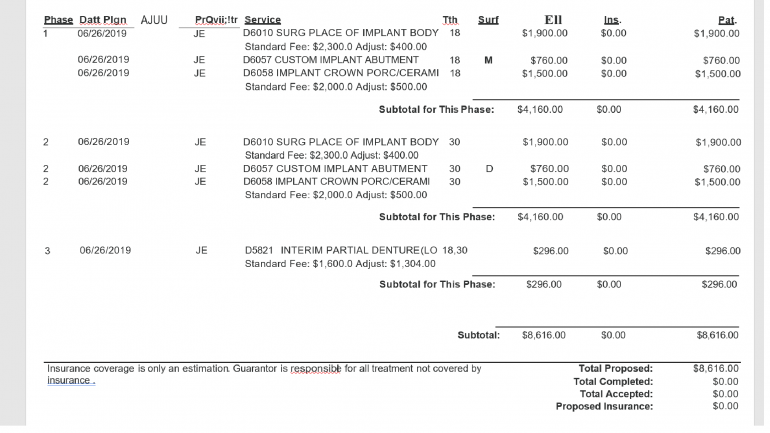
Dental Code D2982: Onlay repair necessitated by restorative material failure
Dental Code D2982 refers to the procedure of repairing an onlay, a type of dental restoration, when it has failed due to the underlying restorative material. Onlays are tooth-colored dental restorations that cover the entire chewing surface of a tooth, as well as one or more cusps. They are typically made of gold, porcelain, or a composite resin material.
What does Dental Code D2982 Mean?
Dental Code D2982 is used to indicate that an onlay restoration has failed and needs to be repaired. This can happen for a variety of reasons, such as the restorative material breaking down over time, or the onlay becoming dislodged or damaged. When this occurs, the onlay must be repaired in order to restore the tooth's function and appearance.
Assessment and Diagnosis
The first step in the onlay repair process is for the dentist to thoroughly examine the affected tooth and the existing onlay. They will assess the extent of the damage or failure, and determine the best course of action for repairing the onlay. This may involve taking X-rays or other diagnostic tests to get a clear picture of the underlying tooth structure and the condition of the onlay. The dentist will also consider the patient's oral health history, any previous dental work, and any other factors that may be relevant to the repair process. They will then discuss the findings with the patient and recommend the appropriate treatment plan.
Removal of the Existing Onlay
If the dentist determines that the onlay needs to be repaired, the next step is to carefully remove the existing onlay. This is a delicate process that requires specialized tools and techniques to ensure that the underlying tooth structure is not damaged. The dentist will use a dental handpiece, which is a small, high-speed drill, to carefully remove the onlay without causing any further damage to the tooth. They will also closely monitor the procedure to ensure that no fragments of the onlay remain in the tooth. Once the onlay has been removed, the dentist will thoroughly inspect the tooth to assess the extent of any damage or decay.
Preparation of the Tooth
Once the existing onlay has been removed, the dentist will need to prepare the tooth for the new onlay. This may involve removing any damaged or decayed tooth structure, and reshaping the tooth to ensure a proper fit for the new onlay. The dentist will also need to clean the tooth thoroughly to remove any debris or bacteria that may have accumulated beneath the old onlay. They may use specialized cleaning tools and techniques, such as ultrasonic scaling or air abrasion, to ensure that the tooth is free of any contaminants. Once the tooth has been prepared, the dentist will carefully evaluate the shape and size of the prepared area to ensure that the new onlay will fit properly.
Impression Taking and Mold Creation
After the tooth has been prepared, the dentist will take an impression of the tooth and the surrounding area. This impression will be used to create a mold, which will be used to fabricate the new onlay. The mold may be created using a variety of materials, such as plaster or a soft, pliable material that can be easily molded to the shape of the tooth. The dentist will carefully ensure that the impression accurately captures the precise shape and dimensions of the prepared tooth, as well as any surrounding teeth or structures that may be relevant to the fit and function of the new onlay.
Placement of the New Onlay
When the new onlay is ready, the dentist will carefully place it on the prepared tooth. This involves thoroughly cleaning the tooth surface and applying a special adhesive to ensure a strong bond between the onlay and the tooth. The dentist may also need to make minor adjustments to the fit or shape of the onlay to ensure a comfortable and effective restoration. They will then carefully inspect the placement of the onlay to ensure that it is properly aligned and that the bite is correct.
Final Adjustments and Polishing
After the new onlay has been placed, the dentist will make any necessary final adjustments to ensure a proper fit and bite. They may need to make minor modifications to the shape or contour of the onlay to ensure that it is comfortable and functional for the patient. The dentist will also carefully polish the onlay to give it a smooth, natural-looking finish. This may involve the use of specialized polishing instruments and materials to ensure that the surface of the onlay is smooth and free of any imperfections. Once the final adjustments and polishing have been completed, the dentist will provide the patient with instructions for caring for the new onlay and maintaining their oral health.
Summary of Dental Code D2982
Dental Code D2982 refers to the procedure of repairing an onlay dental restoration when it has failed due to the underlying restorative material. This procedure involves carefully removing the existing onlay, preparing the tooth, taking an impression for a new onlay, fabricating the new onlay, placing it on the tooth, and making any necessary final adjustments. The entire process is detailed and requires specialized skills and equipment to ensure a successful outcome for the patient.
If you're experiencing issues with an existing onlay, it's important to see a qualified dentist as soon as possible. They can assess the situation and determine the best course of action, which may involve a procedure like the one described under Dental Code D2982.
Are you looking for affordable dental care options? Check out Dr. BestPrice, a dental auction platform that connects patients with trusted dentists and provides transparent pricing on a variety of dental procedures, including onlay repairs.
